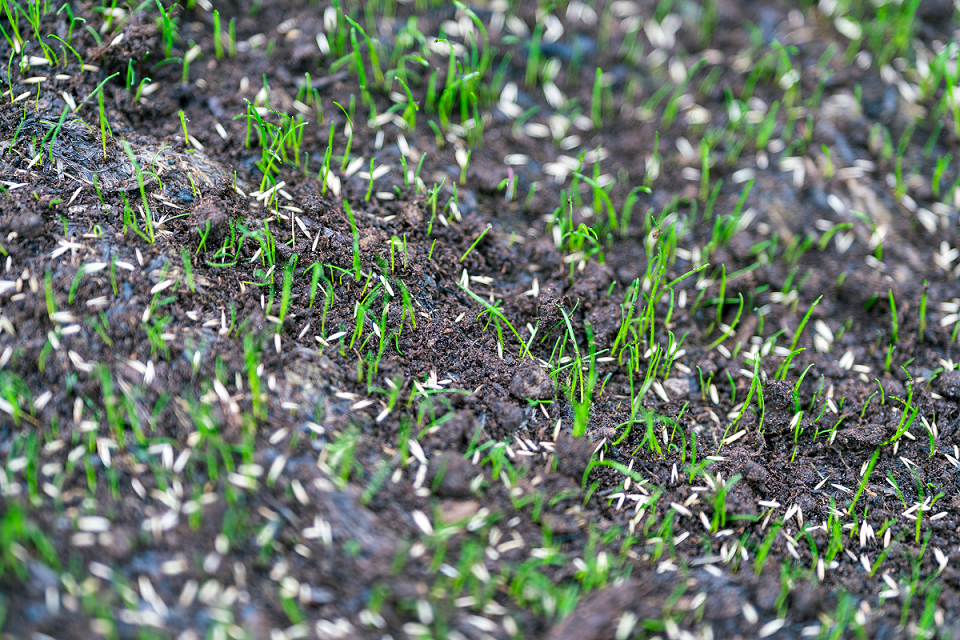There’s nothing better than a green, healthy lawn. Every lawn needs to get started somewhere, but getting a healthy lawn isn’t always as simple as throwing some grass seeds onto soil and hoping it’ll work out! Several challenges may emerge from the beginning to the end of the growing or overseeding process, and your lawn will require attention throughout. Understanding what some of the most common issues are will help you address them properly.
Common Problems Associated with Starting Turf
These are some common issues that may arise when trying to establish new turf:
Problem Areas
We’ve all had to deal with areas of the lawn where grass just doesn’t want to grow in. There could be several reasons for this, including hydrophobic soils or lack of nutrients, but these areas need to be dealt with if you want an even covering on your lawn.
Low Germination Rates
Not every seed you plant will necessarily sprout or thrive. A low germination or survival rate means you’ll have a patchy or uneven lawn that will require additional care to get back in shape. You may also have to deal with weeds that crop up and take over slow-growing grass.
Poor Root Growth
Healthy roots are the basis of healthy turf. If newly planted grass seeds don’t put down deep and vigorous roots, you won’t have much to work with in the long run. Poor soil health, including compaction, lack of nutrients, or soil with the wrong pH, will hinder root growth. Make sure the soils you’re working with are in good shape before laying down seeds.

How to Solve the Most Common Problems
These problems can be addressed with better lawn care practices and with the right products. Start by preparing your lawn for seeds to thrive. This usually means weeding, mowing, and removing thatch, which will get in the way of new seeds getting laid down
You’ll want to address any soil health or structure issues. Dry or compacted soil can limit root growth and may prevent water from seeping in. Aerating your lawn will help get soil in better shape. Some soil amendments will help with soil structure or address watering issues.
It’s hard to overstate the importance of proper watering. Make sure to water regularly, and long enough that water gets into the root zone. Check for dry spots or other areas that may not be getting enough water.
Apply your new seeds at the right time of year. Early fall is the most common time, since soils are still warm and seedlings should establish before it gets too cold. If you miss the fall window, wait until spring when soil temperatures are at least 50 Degrees Fahrenheit.
If your lawn remains stubbornly unproductive, you can turn to products to help get more nutrients into the soil and assist with rooting and water management. Arborjet | Ecologel has a program of pre-selected products designed to enhance germination and seed establishment in lawns. Get more information here.

